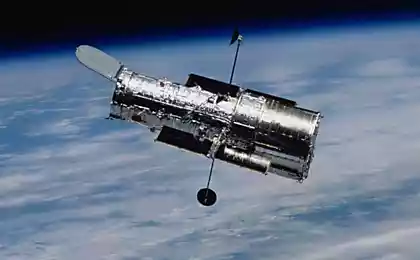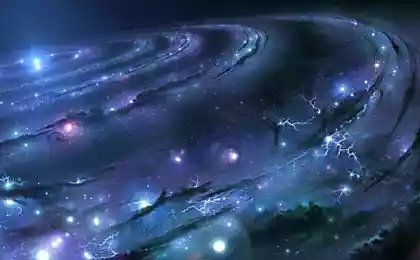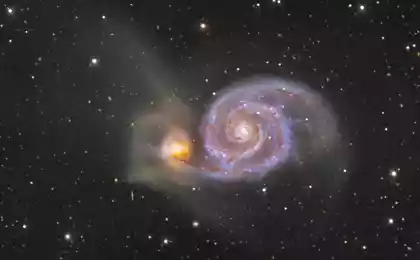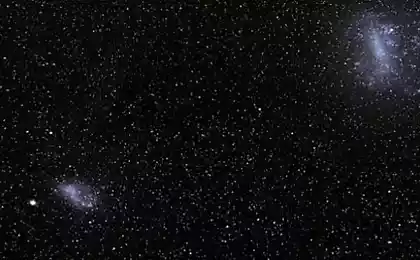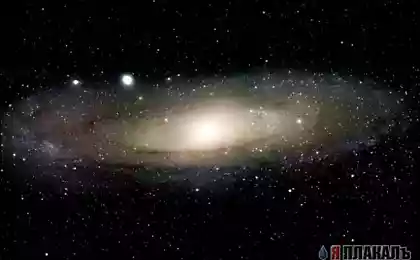820
ALMA telescope team managed to get a detailed image of a distant galaxy
7,111,392
When you click the image to open in full size i>
Professionals working with a telescope ALMA in a so-called mode "long base" managed to get a detailed image of a distant galaxy. This galaxy is a type of "gravitationally lensed". In the photo you can see close to this star forming regions galaxy with detail that previously could not get. According to scientists, the image quality is much higher than those that were obtained by Hubble.
The observations in question were carried out during the program Long Baseline Campaign . As a result of the program, scientists were able to get a lot of information about how near or on deep space. For example, in late 2014, astronomers were able to observe a distant galaxy SDP.81 .
Light from this galaxy on its way to the world has been exposed to so-called gravitational lensing effect. The effect is that the massive galaxy, which is the line of sight between Earth and the distant galaxy, the latter acts on the light like a lens. The result of such exposure is known as the "Einstein ring." The results of observations at the telescope ALMA tested several groups of independent scientists. The result is the identification of a large amount of information about this galaxy, including its structure, dynamics, and more.
It is worth noting that the ALMA interferometer works as a - separate antennas telescope work synchronously, a sample of a single virtual telescope very large. Therefore, the new resolution images up to 6 times higher than the Hubble. As a result - the scientists were able to identify previously observed fine structure, dust clouds, is a "repository" of cold molecular gas. Scientists theorize that the material is original "building blocks" from which stars and planets are formed. The observed galaxy managed to discern the star-forming region of up to 100 light-years.
"Received on ALMA reconstructed image of a distant galaxy is staggering. Giant Light collecting area of the telescope ALMA, the large distance between its antenna and a stable environment over the Atacama desert - all these factors make it possible eventually to receive such incredible detail images and spectra. The sensitivity of our observations is very high: we can even analyze the relative movements of the individual parts of the observed galaxy. The galaxies are on the other side of the universe, we can study the processes of their merger, we can see how there comes a huge number of stars! ", - said Rob Ayvison (Rob Ivison), scientific director of the ESO and co-authored two articles written on this material.
Source: geektimes.ru/post/251706/
When you click the image to open in full size i>
Professionals working with a telescope ALMA in a so-called mode "long base" managed to get a detailed image of a distant galaxy. This galaxy is a type of "gravitationally lensed". In the photo you can see close to this star forming regions galaxy with detail that previously could not get. According to scientists, the image quality is much higher than those that were obtained by Hubble.
The observations in question were carried out during the program Long Baseline Campaign . As a result of the program, scientists were able to get a lot of information about how near or on deep space. For example, in late 2014, astronomers were able to observe a distant galaxy SDP.81 .
Light from this galaxy on its way to the world has been exposed to so-called gravitational lensing effect. The effect is that the massive galaxy, which is the line of sight between Earth and the distant galaxy, the latter acts on the light like a lens. The result of such exposure is known as the "Einstein ring." The results of observations at the telescope ALMA tested several groups of independent scientists. The result is the identification of a large amount of information about this galaxy, including its structure, dynamics, and more.
It is worth noting that the ALMA interferometer works as a - separate antennas telescope work synchronously, a sample of a single virtual telescope very large. Therefore, the new resolution images up to 6 times higher than the Hubble. As a result - the scientists were able to identify previously observed fine structure, dust clouds, is a "repository" of cold molecular gas. Scientists theorize that the material is original "building blocks" from which stars and planets are formed. The observed galaxy managed to discern the star-forming region of up to 100 light-years.
"Received on ALMA reconstructed image of a distant galaxy is staggering. Giant Light collecting area of the telescope ALMA, the large distance between its antenna and a stable environment over the Atacama desert - all these factors make it possible eventually to receive such incredible detail images and spectra. The sensitivity of our observations is very high: we can even analyze the relative movements of the individual parts of the observed galaxy. The galaxies are on the other side of the universe, we can study the processes of their merger, we can see how there comes a huge number of stars! ", - said Rob Ayvison (Rob Ivison), scientific director of the ESO and co-authored two articles written on this material.
Source: geektimes.ru/post/251706/
How to Compare LED lamp and an incandescent lamp
Facebook company abandoned plans to launch a communications satellite for $ 500 million


